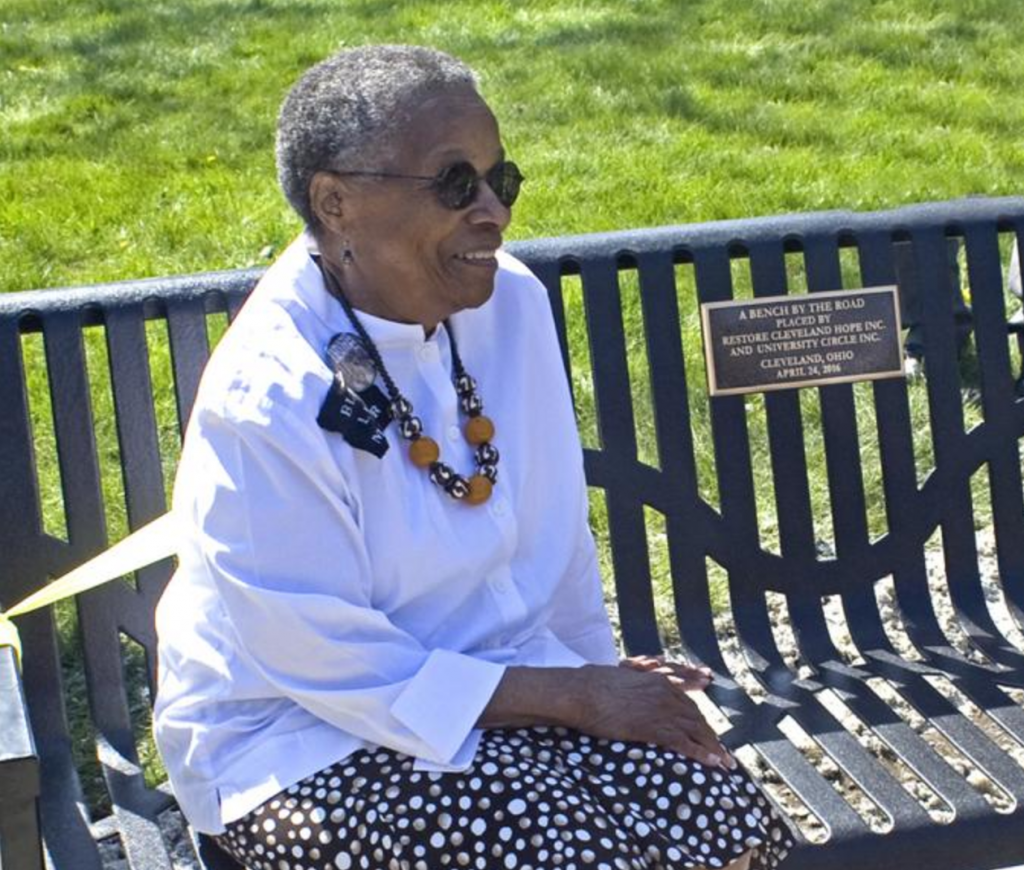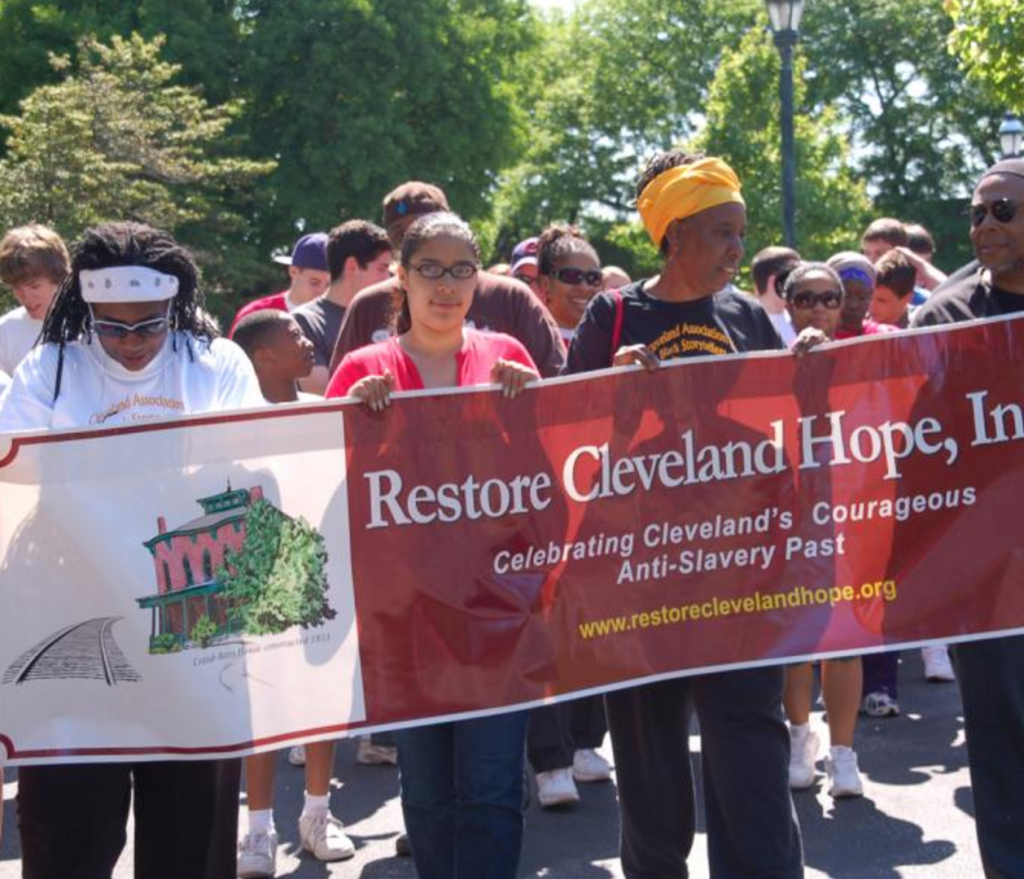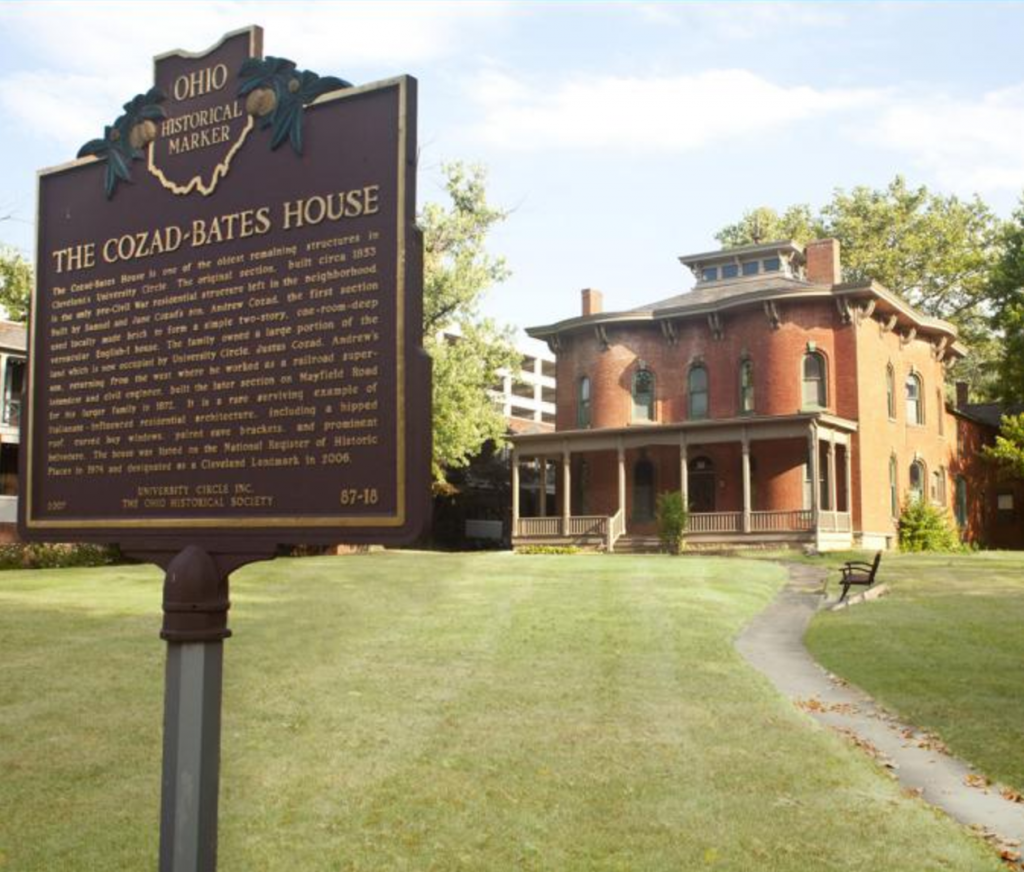AWESOME PROJECT: Recovering lost stories of the Underground Railroad
Published April 20, 2017
In 2002, 73-year-old Joan Southgate – retired Cleveland social worker and grandmother of nine – decided she was going to take her daily one-mile walk up a few levels. She felt called to honor her enslaved ancestors by walking the very same hundreds of miles they’d walked to freedom, on the Underground Railroad. Her march made the news, and when she got home, she founded an organization called Restore Cleveland Hope (“hope” had been Cleveland’s code name on the Underground Railroad) and set to work saving the city’s last remaining “safe home” – the Cozad Bates House – from demolition.

“She wanted her grandchildren to grow up being proud of having survived,” explains photographer and Restore Cleveland Hope volunteer Jeanne Van Atta. “When the subject of slavery comes up in schools, African American children hang their heads, and feel ashamed, and that’s something she wanted to get past. That this is not something to be ashamed of. This is something to be proud of. This is not something you did, but something that was done to you. And something that your ancestors survived by their own strength and cleverness, and they only became stronger from going through this.”

recovering lost history
The Cozad Bates House stands today, and hosts wonderful cultural and educational programs, including a Freedom Festival featuring African dancing, singing, and reenactments. Last year, an actress took on the story of Lucy Bagby, the last enslaved fugitive to seek shelter in Cleveland. “It’s a sad story in many ways,” says Van Atta. “There was a lot of support for her because of the fugitive slave act. Ohio was a free state. There was a fight between people who wanted to capture her and people who wanted to keep her free. She was actually sent back to her so-called owner. Ultimately she was freed, and she moved back to Cleveland and was buried here in a cemetery.”
Restore Cleveland Hope’s team of volunteers also go into schools and communities to lead “beloved community dialogues,” in which they tell the story of a person whose life was touched by the Underground Railroad, and then draw lessons for today. Toni Morrison recently placed one of her twelve “benches by the road” – commemorating those who worked to fight slavery – in front of the Cozad Bates House. Wonderful work is being done.
The problem is that Restore Cleveland Hope can’t keep as much of the history alive as it would like to – because so much of it is lost. “A lot of the underground railroad history was lost because of the nature of what was done,” explains Van Atta. “It was all done in secret. Nothing could be written down or documented, because people’s lives were at stake. And then once the Civil War was over, I think a lot of people wanted to move on. People were trying to survive. The white abolitionists moved on to other issues. And the people who had been enslaved were desperately trying to survive and deal with all of the new hardships that they had to face. So preserving that history was not a priority.”

This was, unfortunately, especially true in Cleveland. “Cleveland is not usually thought of,” explains Van Atta, “when people think of Northern Ohio and the Underground railroad. They usually think of Oberlin, because they’ve done a really good job of preserving their history, and Cleveland has not. Until Restore Cleveland Hope came along, people didn’t know what Cleveland’s role was during that time.”
That’s why Restore Cleveland Hope and the Cozad Bates House volunteer staff recently raised money via ioby to fund new research into the history of the Underground Railroad in Cleveland. They plan to hire university students to dig deep into archives and communities, using maps, illustrations, and court case documents to recover as many names and individuals’ stories as they can.
Money raised will also help fund this year’s Freedom Festival; because the organization is volunteer-run, and the festival offered free of charge to participants, funds are needed to cover permitting, sound equipment, and other basics.
To learn more about Restore Cleveland Hope’s wonderful work, visit them here.
Feeling inspired? Want to take action in YOUR neighborhood? If you have awesome ideas about how to make your town greener, safer, and more fun, let us help! Tell us your awesome idea right here. We’d love to help you get started today.
Pssst…. In OTHER ioby news: Have a great idea, but feel like you need a blueprint to get you started? Or a recipe to follow? We’ve got you covered. Check out some of our very best recipes for change, here.
